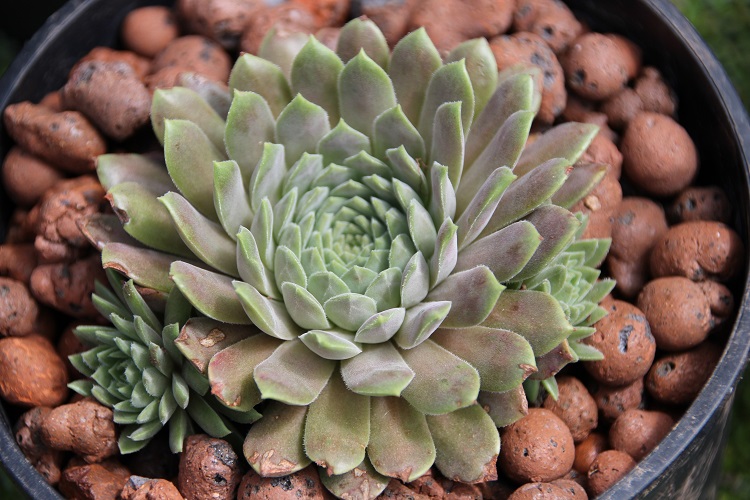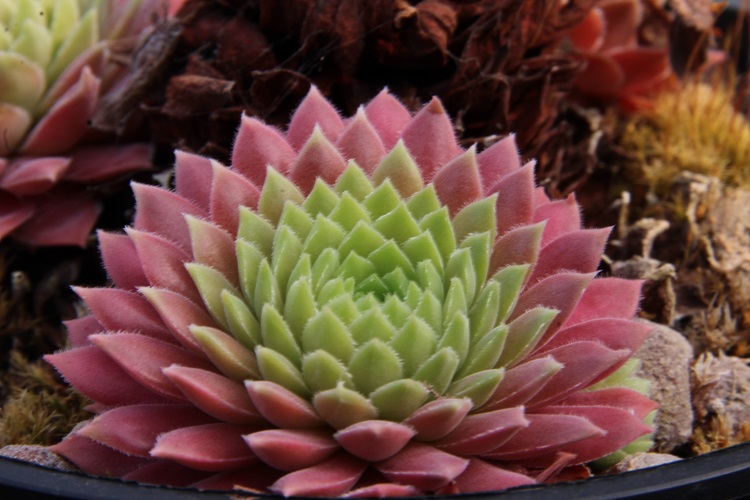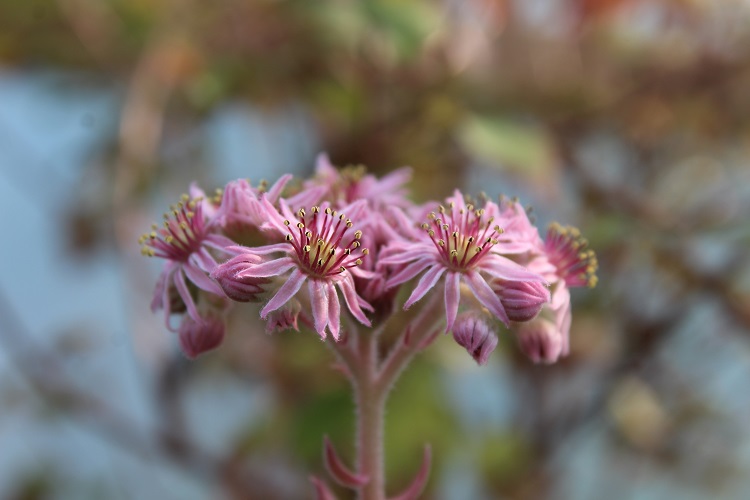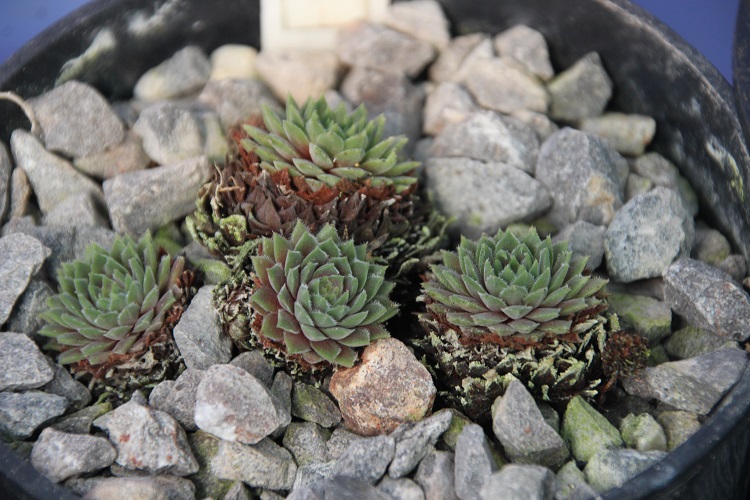 |
One of my favourite species, the rosettes have a dwarf lilac charm that I find difficult to resist.
It has a reputation for being fussy about damp in the winter but haven't had that problem. The rosettes get smaller during the winter months
but I haven't found them rotting off. Plants of the World online accepts it as a species and says: "The native range of this species is Bulgaria. It is a succulent perennial and grows primarily in the temperate biome." Others have put forward the view that it is better treated as a subspecies of S. marmoreum in which case it becomes S. marmoreum ssp. erythraeum. The AGS encyclopedia says: "Compact tufts of open rosettes 2-5cm across with offsets on short stolons. Leaves ovate to spoon-shaped, 10-20 by 5-10mm long, green with a purplish tinge, densely short hairy giving them a velvety look. Flowering stems leafy, 15-20cm high carry wide inflorescences with pink to red-purple flowers 2cm across, having eleven to thirteen petals. Endemic to mountains of Bulgaria." |
|
| 12th June 2016 | ||


